
Review on 📱 Renewed Samsung Galaxy Tab S6 Lite 10.4", 64GB WiFi Tablet Angora Blue - SM-P610NZBAXAR - S Pen Included by Andrey Constantinov ᠌

Lousy product, low quality.
I've already spoken everything on the screen. After reading numerous articles on the Internet, I came to the conclusion that while the issue does not occur frequently, a number of people do experience it. The website () caught our attention in particular since it contains official Samsung support information such as this: "In the Samsung Galaxy Tab S6 Lite, the pulse-width modulation index is 242.7." I don't want to get involved in debates over PWM's existence or absence; you should make that decision. What's the outcome? I am extremely happy that the tablet was returned (I purchased it from an internet retailer, and they were required to do so by law). I gave it one star because I don't believe you can offer more for a device that is supposed to be used for prolonged watching of multimedia content but isn't and could potentially harm your eyesight!
- + Relatively more productive than the SD 660 in everyday chores (launching programs, opening tabs, etc.), at least based on my measurements. I didn't try it in games; the score on the benchmark is 10–20% higher. +Because it is metal, strength should be its top quality. Plus stylus. Simply put, using it is incredibly pleasurable and comfortable. It is not like in S6 or S7; it is only a wand with one button here, yet it is incredibly convenient to sketch and operate. Astonishingly, the stylus does not function on other devices even though the tablet detects it at a distance of 3 to 5 cm from the screen and feels the button being pressed. + Conveniently, it is magnetically fastened to the top panel and securely holds there. + Good sound in headphones (often I modify the sound with an equalizer, but here everything turned out to be on top); there is even sound regulation depending on the individual's hearing and age! Since the speakers are AKG, sort of, the sound quality is likewise superb, stereo, and audibility is good. plus ergonomics. It is neat in terms of tactile sensations and can be held in one hand.
- -My eyes ache! I've seen and used a lot of panels, including TFT (IPS, TN, MVA, etc.) and AMOLED (with PWM). TFT PLS, so they claim, is set up here. And, for the first time, the screen is hurting my eyes. Additionally, they hurt for roughly 1-2 minutes after you turn on the tablet, increasing the headache agony. I had hoped that this was just habit, but despite using it frequently for five days, it continued. I don't really think that this is caused by PWM because, according to the notebookcheck website, ripples are seen at low brightness and have a frequency of more than a few kilohertz; yet, despite the fact that my Redmi Note 7's IPS has an even lower frequency, no one who looked at it ever got sick. -Screen. It's more corny than IPS, I guess. They perform worse on IPS when compared, with just a gain in terms of black and white. TFT PLS falls short in the rest of the spectrum because the colors are more faded and desaturated. Although there are few viewing angles, there is little color distortion. -The ordinary unit charges rather slowly; it takes about two to three hours. -Shell. Compared to smarts, it is far less customizable here. When it comes to functionality on par with that of pure Android. None were found. As a result, entering a password will never be convenient (although you can be stupid and not establish one). Greed for not putting it here for $23,000. -Side camera towards the front. This is a drawback because there is no fingerprint reader and you must continually input a password. Additionally, if the tablet detects you sideways, you will never be able to use Zoom, Teams, or Skype on the device.It presses on the stomach due to its weight and thinness, making it uncomfortable to hold with your hands.
New products
Comments (0)
Top products in 📱 Tablets

📱 Black Xiaomi Redmi Note 5 Global Smartphone - 6/128 GB

171 Review
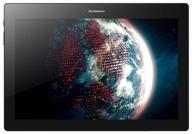
10.1" Tablet Lenovo TAB 2 A10-70L (2015), RU, 2/16 GB, Wi-Fi + Cellular, Android 4.4, blue

124 Review
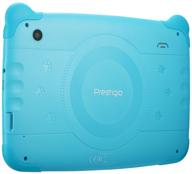
7" Tablet Prestigio SmartKids (2019), 1/16 GB, Wi-Fi, Android 8.1, blue

79 Review
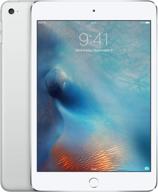
Renewed Apple iPad Mini 📱 4 128GB Silver WiFi for Enhanced Optimization

81 Review
Another interesting products
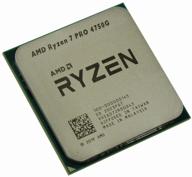
Processor AMD Ryzen 7 PRO 4750G AM4, 8 x 3600 MHz, OEM

11 Review

15.6" Laptop ASUS Vivobook Pro 15 M6500QC-HN118 1920x1080, AMD Ryzen 7 5800H 3.2GHz, RAM 16GB, DDR4, SSD 512GB, NVIDIA GeForce RTX 3050, no OS, 90NB0YN1-M006N0, blue

24 Review
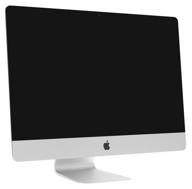
27" Apple iMac All-in-One (Retina 5K, Mid 2020) MXWT2RU/A, 5120x2880, Intel Core i5 3.1GHz, 8GB RAM, 256GB SSD, AMD Radeon Pro 5300, MacOS, Silver

13 Review
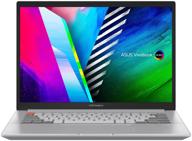
14" ASUS Vivobook Pro 14X OLED N7400PC-KM059 2880x1800, Intel Core i5 11300H 3.1GHz, RAM 16GB, DDR4, SSD 512GB, NVIDIA GeForce RTX 3050, no OS, 90NB0U44-M01450, silver

26 Review

